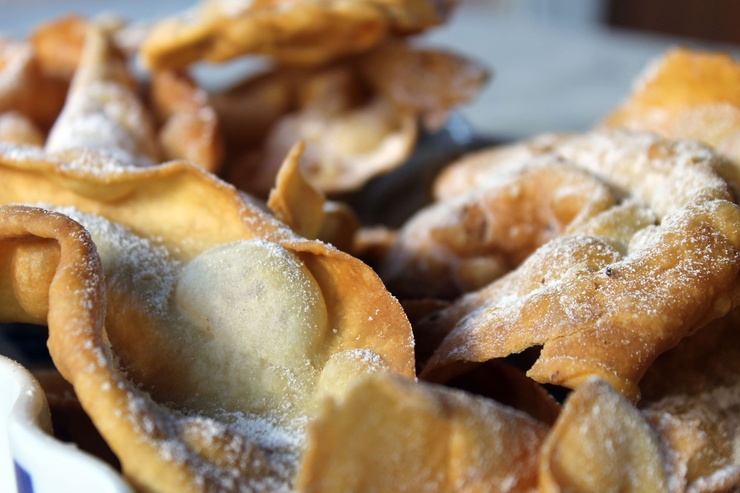
Eat ears for ‘entroido’: Galician gastronomy during Spanish carnival
Published on
Translation by:
Cafebabel ENG (NS)Anyone travelling to north-western Spain should be prepared to pile on the pounds – whether you’ll be served as a guest of someone, or ordering out in a restaurant alike. If you’re there for carnival in February, we recommend going the whole hog
Galicians like to eat – a lot - maybe even too much. If a local from Galicia, or ‘gallego’ (pronounced guyaygo), invites you home for a bite to eat, then you’d better be ready to be fed like a pig before slaughter (or San Martiño, as they say). ‘Neniño,’ they’ll tell you in their sing-song accents, eat more, you’re too skinny – even if you actually weigh 200 kilos. This is the weakness of an aged population which knew what it was like to be hungry, particularly in the rural zones. The only solace your stomach might get is if you are vegetarian: Galicians don’t even know what it means to not eat meat.

Galician gastronomical staples are fresh products from the earth. Preparation of most ingredients is not very complex so that the intensity of the original flavours can remain. Some have accused Galician food of being boring, but banish that thought from your mind. The amount of festivals and carnivals which it has given birth to include the empanada festival in Noia, the mussels fiesta in Illa de Arousa, the requesón (Galician cheese) celebration in A Capelaor the cocido (Galician stew) happenings of Lalín, the latter of which was promoted to national touristic festival, and is celebrated each Sunday before carnival.
The original Italian ‘carnelevare’ – coined from the words for meat (carne) and quit (levare) – celebrates during the three days leading up to Lent, where people traditionally give up meat. Entroida, which is the Galician version of carnival, is a fiesta of excesses, especially when it comes to eating and drinking well. The typical meal is lacón con grelos (the front legs of a pig cooked with vegetables in a stew), cachucha (the head, also cooked in a stew), filloas (a type of pancake made with meat broth, flour and eggs) and orejas ('ears'). Whilst it is not unheard of that Galicians are mostly up for a nibble of pigs ears, in this context ‘ears’ actually refers to a typical desert made with flour, eggs and butter. Once this is all fried up, it looks like an XXL-size version of an ear.
If you’re up for bringing a cornerstone of Galician ‘entroido’ into your houses, we recommend the following recipe:
Recipe: 'Entroidos'

Ingredients:
1 cup of floura pinch of salta tablespoonful of yeast1 block of butterTwo beaten eggsTwo cups of liquor (aguardiente)One lemon ground for zestOil to fryIcing sugar
Preparation:
Mix in all the ingredients well until it forms one big mass. Leave to settle for an hour. Cut the dough into pieces the size of a walnut and use a roller to flatten them – the thinner, the better. Fry immersed in oil until browned. Put onto absorbent paper before transferring to a dish and dusting lightly with icing sugar...
Que aproveche!
Images: main and in-text Orejas aka ears dessert courtesy of © Magdalena Barro; lacón con grelos (cc) juantiagues/flickr/ video (cc) mikeold55/ youtube
Translated from El “entroido” gallego: el carnaval del buen comedor



